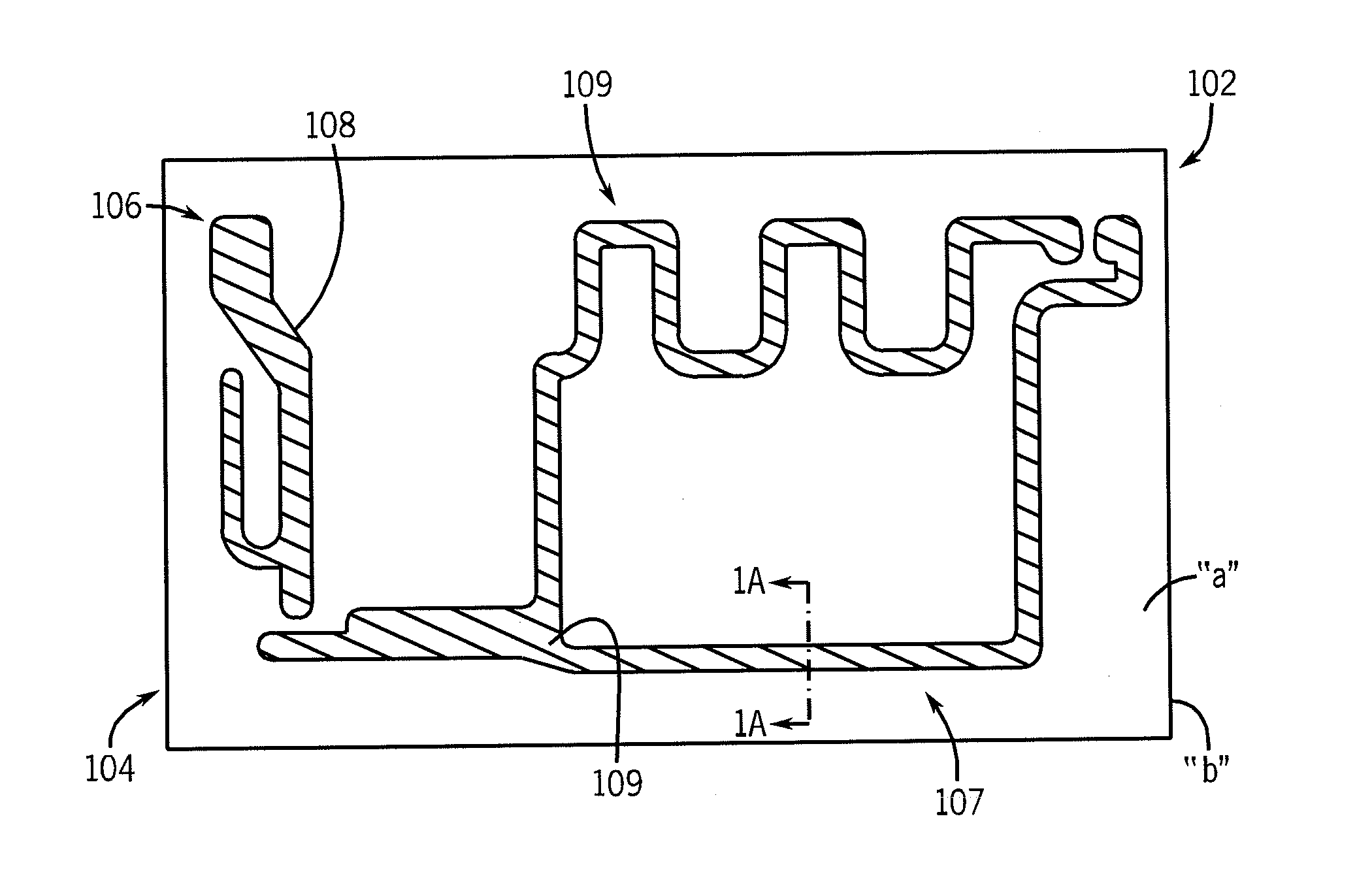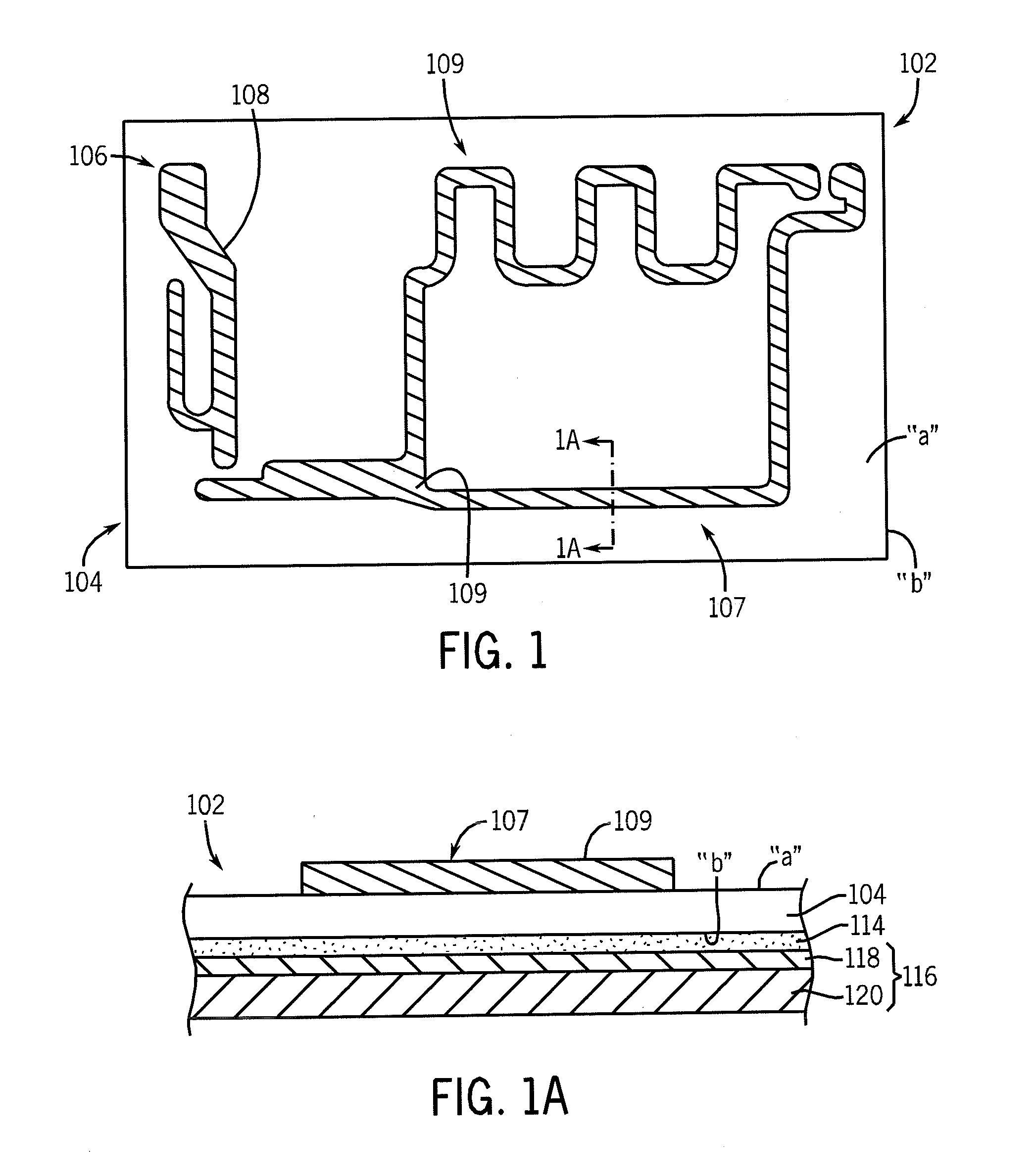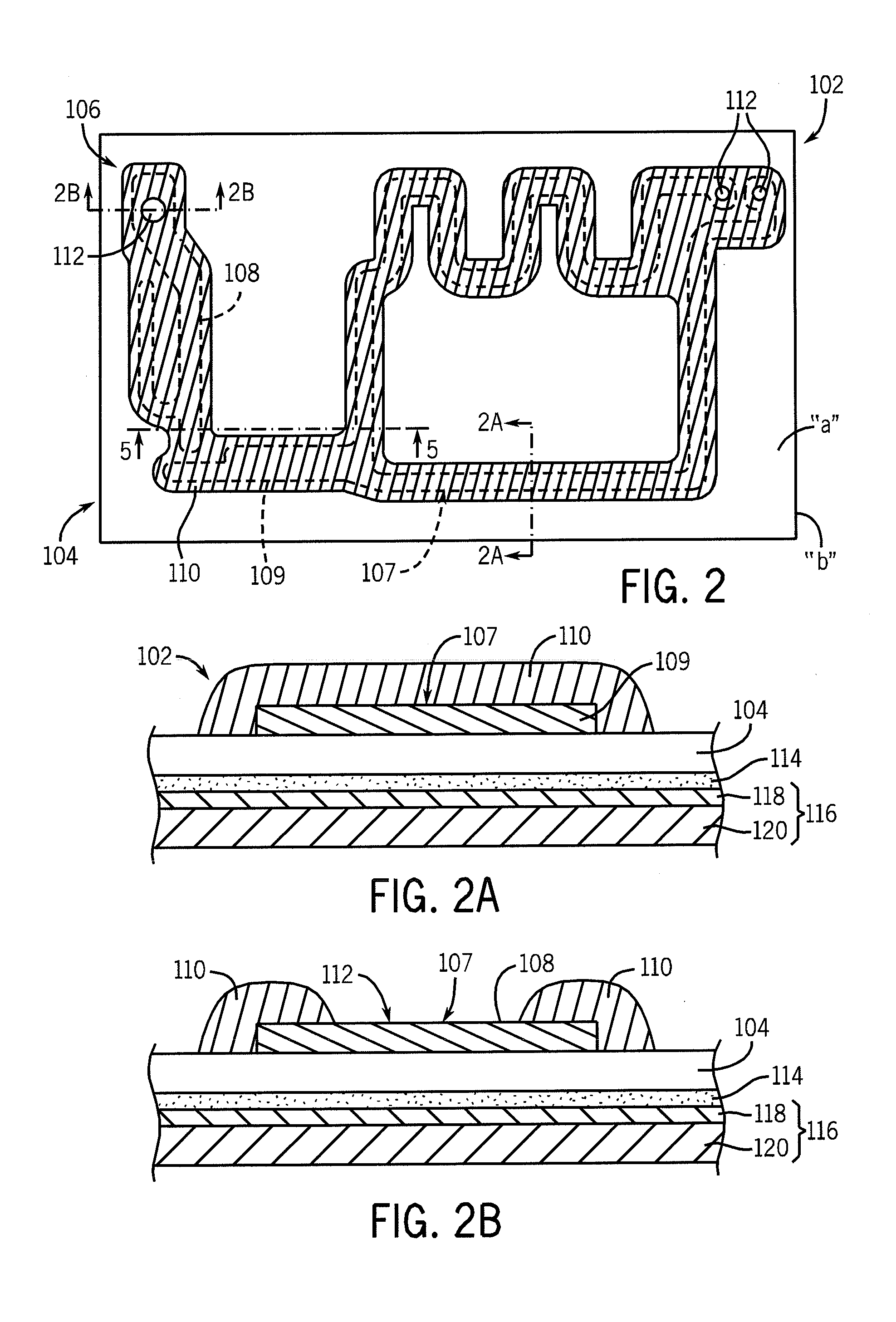Method of Manufacturing and Operating an Antenna Arrangement for a Communication Device
a technology for communication devices and antennas, applied in the field of electronic communication devices, can solve the problems of inability to reuse or recover excess waste of adhesive-coated metal foil, inability to recover substantial waste of expensive raw materials, and inability to manufacture and operate antennas. to achieve the effect of simple or complex antenna design
- Summary
- Abstract
- Description
- Claims
- Application Information
AI Technical Summary
Benefits of technology
Problems solved by technology
Method used
Image
Examples
example
[0086]Present metal foil antennas, both etched in a flexible PCB or die-cut, are often covered with an insulative film or coating to prevent scratching and tearing of the metal foil. The thin insulative film is glued onto the metal foil and is chosen to meet mechanical requirements, not electrical requirements. The insulative film covers the entire antenna, often resulting in a high loss tangent.
[0087]In the present example, two commercially available cellular telephones were tested for the radiation efficiency of their secondary antennas. One telephone was tested only at FM (88-103 MHz) frequencies and the other telephone was tested at FM, Global Positioning Satellite (1.575 GHz) and Bluetooth (2.4 GHz) frequencies. In both cases, tests were made with antennas manufactured by screen printing conductive ink consisting of dispersed silver particles in a polymeric binder on dielectric film substrate. In one case, the printed antennas were left uncovered and in the other case, the prin...
PUM
| Property | Measurement | Unit |
|---|---|---|
| Frequency | aaaaa | aaaaa |
| Dielectric polarization enthalpy | aaaaa | aaaaa |
| Length | aaaaa | aaaaa |
Abstract
Description
Claims
Application Information
 Login to View More
Login to View More - R&D
- Intellectual Property
- Life Sciences
- Materials
- Tech Scout
- Unparalleled Data Quality
- Higher Quality Content
- 60% Fewer Hallucinations
Browse by: Latest US Patents, China's latest patents, Technical Efficacy Thesaurus, Application Domain, Technology Topic, Popular Technical Reports.
© 2025 PatSnap. All rights reserved.Legal|Privacy policy|Modern Slavery Act Transparency Statement|Sitemap|About US| Contact US: help@patsnap.com



